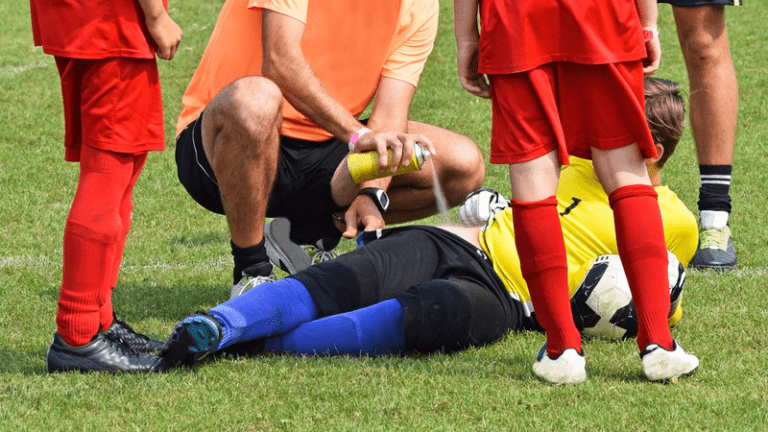I recently learned that a player on the youth basketball team I coach sustained a concussion when he was a few years younger (non-sports related). While he is fine now, has been checked out by the doctors, and is cleared to play, it concerned me. My mind immediately flashed back to play in our spring league, when it seemed like we had a number of kids repeatedly fall, bump their heads, take a blow to the face, or even have a busted nose. One of which was my son who fell on his eye and almost immediately had a golf ball size knot on his eyebrow. I kept trying to remember if this particular kid was also one who hit his head during the spring. Fortunately, he wasn’t. But nonetheless, I was concerned.
His parents shared with me the things I need to be aware of if he were to get bumped or hit in the head in the future, so I would be aware. That helped me to feel more comfortable, but it brought to my attention a real issue that comes with youth sports, especially when you are the coach or parent—the issue of youth sports injuries.
What is the primary responsibility of a youth coach?
As a coach, my number one responsibility is my players and their safety. All of the, “help them to learn the game and develop” and “teaching them the value of competition and sportsmanship” or “making sure they have fun” comes secondary to their safety. A recent USA Today article I read shows this needs to be more of a priority for all of us involved with youth sports. The article shares results from a survey that reveal a high percentage of youth athletes get injured and even play injured.
- 42% have hidden or downplayed an injury during a game so they could keep playing; (62% say they know someone who has done this.)
- 54% have played injured and 70% of them say they told a coach or parent they were hurt.
- 53% of coaches say they have felt pressure from a parent or player to put a child back in the game if the child has been injured.
Those are alarming statistics. I think back to when my son hit his head. I had my mind made up that he was done for the game. However, the game was close and intense, somebody else got hurt, and I gave him the option of returning to the game. He said he wanted to play. I allowed him and he actually played harder, more determined, and better than before getting injured. So, it seems I was “right” in letting him play. Although after reading this article, I think it would have been better to let him sit.
Making better decisions when it comes to youth sports injuries
Based on the statistics I shared earlier, I’m probably not the only coach or parent who has made this type of decision. But becoming aware of the statistics and having a renewed focus on player safety can help us all make better decisions the next time we are faced with a similar situation. Here are just a few recommendations from CoachUp to help prevent youth sports injuries.
- Learn the symptoms of concussions and traumatic brain injuries
- Encourage your child to talk to their coach regularly during practices and games so they are comfortable and open with the coach if an injury occurs
- During and after competitions, make an extra effort to celebrate when your child makes a play that is completed with good form and technique
How can you do your part to help reduce youth sports injuries?
How useful was this post?
Click on a star to rate it!
Average rating 0 / 5. Vote count: 0
No votes so far! Be the first to rate this post.




